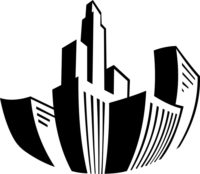July Construction Starts Rise 6% Nationwide
Residential Building
Residential building, at $223.4 billion (annual rate) in July, held basically even with its June pace. Single-family housing slipped 3%, reflecting this performance by major region—the West, down 10%; the Northeast and South Central, each down 3%; the Midwest, unchanged, and the South Atlantic, up 1%. Since the end of 2013, single-family housing has been essentially flat, placing the strong upward movement that was reported during 2012 and most of 2013 on hold.
“One explanation for the sluggish single-family market is that investor demand has waned, and first-time homebuyers have been unable to fill the gap, given continued tight bank-lending standards,” Murray said. “On a positive note, the most recent survey of bank-lending officers conducted by the Federal Reserve shows that 18% of the respondents had eased lending standards on residential mortgages during the second quarter, which along with continued low mortgage rates, may help housing demand and construction to strengthen in the latter half of this year.”
Multifamily housing in July increased 8%, maintaining the moderate upward trend that’s been present during 2014. Large multifamily projects that supported the July increase included a $350-million multifamily tower in Queens, N.Y., a $260-million condominium tower in Honolulu and $160 million for the multifamily portion of the $300-million, mixed-use building in Los Angeles.
Through the first seven months of 2014, the top five metropolitan areas ranked by the dollar amount of new multifamily starts were: New York City, Washington, D.C., Los Angeles, Miami and Boston.
Nonbuilding Construction
Nonbuilding construction in July climbed 14% to $136.4 billion (annual rate). While most of the public works categories showed decreased activity during July, miscellaneous public works (which includes sitework, mass transit and pipelines) soared 103%. The lift came mostly from the $1.2 billion related to the start of Phase 2 of the Dulles Corridor MetroRail project in Herndon, Va. In general, mass transit rail work has stayed strong during 2014, registering a 61% year-to-date gain for the nation as a whole.
Highways and bridges moved in the downward direction during July, sliding 11% and 21%, respectively. The environmental public works categories showed a moderate loss of momentum in July, with river-harbor development and water supply systems each down 7% while sewer construction fell 9%. The electric-utility and gas-plant category in July jumped 55% as part of its occasional departure from the downward trend reported over the past year.
Large projects in July that boosted the electric-utility and gas-plant total included a $1.5-billion natural gas liquid fractionator facility in Texas and $500 million for electrical system upgrades to the East Side Access Tunnel project in New York City.
The 4% gain for total construction starts on an unadjusted basis during the first seven months of 2014 was the result of a varied performance by the three main construction sectors. Nonresidential building during the January-July period advanced 13%, due to this behavior—commercial building, up 5%; manufacturing building, up 149%; and institutional building, down 1%. Residential building grew 5% year-to-date, with single-family housing up 2% and multifamily housing up 17%. Nonbuilding construction registered a 10% year-to-date decline, with public works down 10% and electric utilities down 8%.
By geography, total construction starts in the first seven months of 2014 revealed gains in two regions—the South Central, up 18%, and the Northeast, up 5%. The West was unchanged from the same period a year ago while declines were posted by the Midwest, down 1%, and the South Atlantic, down 3%.


